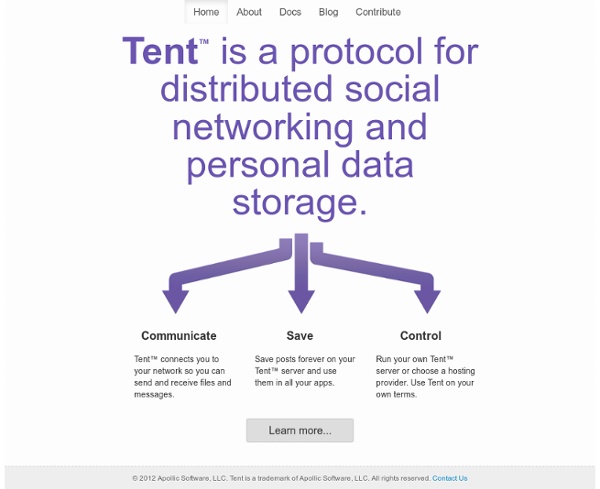Tent - the decentralized social web

Movim - The kick-ass social network
OpenLink Data Spaces
What are Data Spaces? A named structured data cluster within a distributed data network where each item of data (each "datum") has a unique identifier. Fundamental characteristics of data spaces include: Each Data Item is a Data Object endowed with a unique HTTP-based Identifier Data Object Identity is distinct from its Content, Structure, and Location (Address) Data Object Representation is delivered via structured content constrained by a Schema (in this case the Entity-Attribute-Value model) Creation, Update, and Deletion privileges are controlled by the Data Space owner. In relation to the Web, data spaces provide clustered points of access to data object; basically, they provide structured data access partitioning just as 'machine names' provide name oriented partitioning for DNS and 'table names' the same for database systems. Why are Data Spaces important? Data Spaces provide a powerful conceptual model based virtualization layer that sits atop heterogeneous data sources. News FAQs
Codiad Web Based IDE by Fluidbyte
MediaGoblin
kune | A web tool to encourage collaboration, content sharing & free culture
Backbone.js
The internet is our social network | friendica
your private social network
The Libertree Project - Libertree
Related:
Related:



